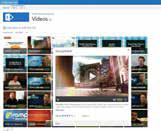When It Comes to Corporate Video, Follow the Money


When it comes to championing streaming in the enterprise, it pays to follow the money.
As a video professional, you may fall in love with a solution that captures video from a variety of sources, encodes a file in a certain manner or enables customized portals for presenting your content. The cruel reality, though, is that slick technology won’t buy you much credibility when selling the idea of streaming to others in your organization.
Rather, it’s money that does the talking. Specifically, in order to win budget for streaming video deployments you must be able to demonstrate how that solution will help your company save—or make—more money. At the bottom line, it’s all about “return on investment.”
In fact, 61% of all executives with purchase authority for web communications responding to a fourth quarter 2014 Wainhouse Research survey describe “return on investment” as a “very important” factor influencing their streaming technology purchase decision.
Here are some general rules that you can put to work as you try to build the ROI case for implementing streaming solutions within your organization.
• Lower deployment costs help in ROI evaluations: Organizations that trim up-front deployment costs get to shoulder a lighter burden when trying to tally up realized cost-savings to offset their technology investments. If ROI is a key consideration within your organization, consider alternatives beyond on-premises platforms that can incur significant up-front spending for streaming capacity that may not be used immediately. Hosted solutions offer one way for companies new to streaming to scale their technology investments to match the scope of streaming usage as it increases over time.
• Identify varied streaming applications: In many cases, companies will implement streaming to address specific uses, such as employee training or all-hands corporate meetings. If streaming solutions are used in only a handful of ways, the opportunities for identifying cost-savings are limited, as well. By identifying additional applications for the technology, such as using webcasts to disseminate employee benefit information from the human resources department, organizations can spread their streaming investment across a broader array of cost-saving activities.
A daily selection of features, industry news, and analysis for tech managers. Sign up below.
• Grab the low-hanging fruit: Organizations can recognize significant savings when they leverage streaming technologies to reduce travel expenses. Look for situations in which your company budgets for internal team meetings designed to convey information to a far-flung network of team members. The costs of air travel and hotel rooms to bring a nationwide sales team together for a key product launch, for instance, can be completely eliminated if that information can be distributed to team members via a webcast instead.

• Exploit emerging business metrics: If webcasting reduces employee travel, it also cuts down on an organization’s carbon footprint. In a marketplace becoming more focused on sustainable environmental initiatives, explore opportunities to claim reductions in travel activity as greenhouse offsets. Even though environmental rules are still evolving, webcasting could emerge as a chip that could be played to help organizations address their green responsibilities.
• Highlight the hidden costs: When employees travel to participate in training sessions or other internal meetings, the expense of such events go beyond just paying travel expenses. The number of productive working hours lost when employees go on the road can be substantial. Count up the number of hours that employees dedicate to attending remote events. Attribute a value to this time by calculating the total salaries and benefits paid to workers for the hours that they spend travelling to-and-from these corporate events. The impact of these “lost hours” can help justify a value for streaming that reaches beyond the incremental spending associated with a given corporate event.
• Understand the intangibles: The implementation of streaming technologies can infuse an organization with other benefits that are not immediately identifiable to those not familiar with your organization’s culture. At a company dealing with high employee turnover, for instance, the expanded use of streaming may give executives a venue to explain the corporate strategy and provide employees with an understanding of the company’s direction that keeps them from hopping to another employment opportunity. Similarly, harried employees who are able to forego at least one company trip may experience a better work-life balance that may enhance their performance when they are in the office. Take some time to learn about the intangible issues that resonate most with your executive team and highlight those when describing the impact that broader streaming usage can have on your organization.
THE TAKE AWAY
Overall, the value of webcasting becomes readily apparent to those willing to put a pencil to the numbers. And, as the costs of streaming implementation continue to decline, those ROI calculations will only grow more favorable. Make the effort to “follow the money,” and you will find the path to justifying budget for technologies that will further enhance your organization’s video production and distribution capabilities.
Steve Vonder Haar is a senior analyst with Wainhouse Research and can be reached at svonder@wainhouse.com.
